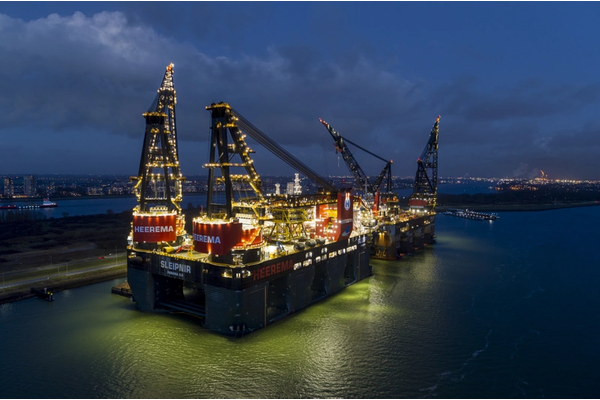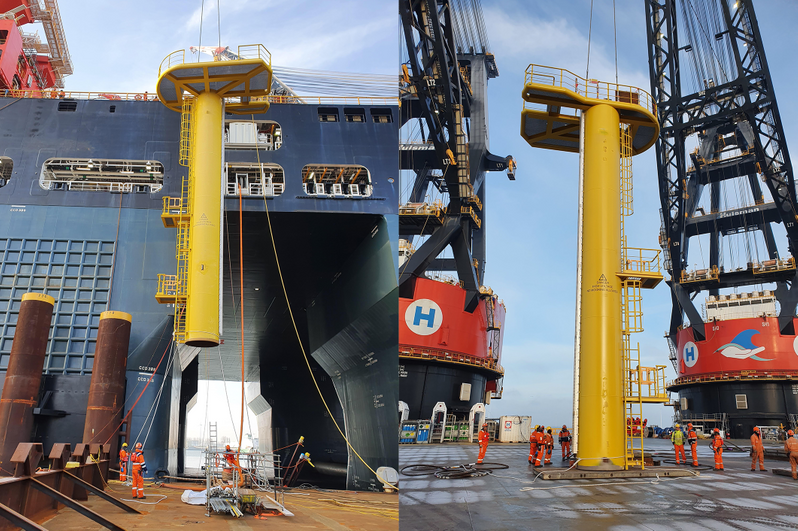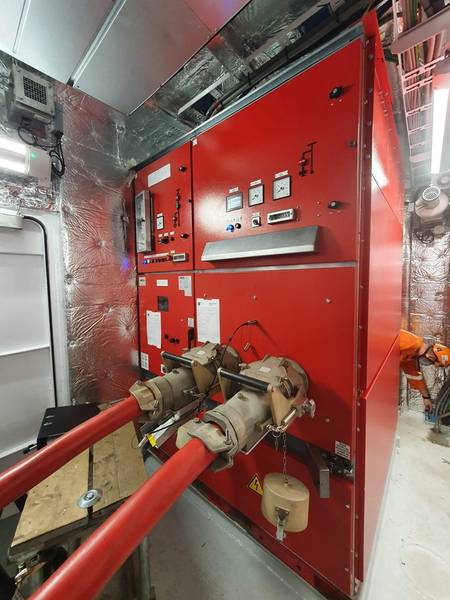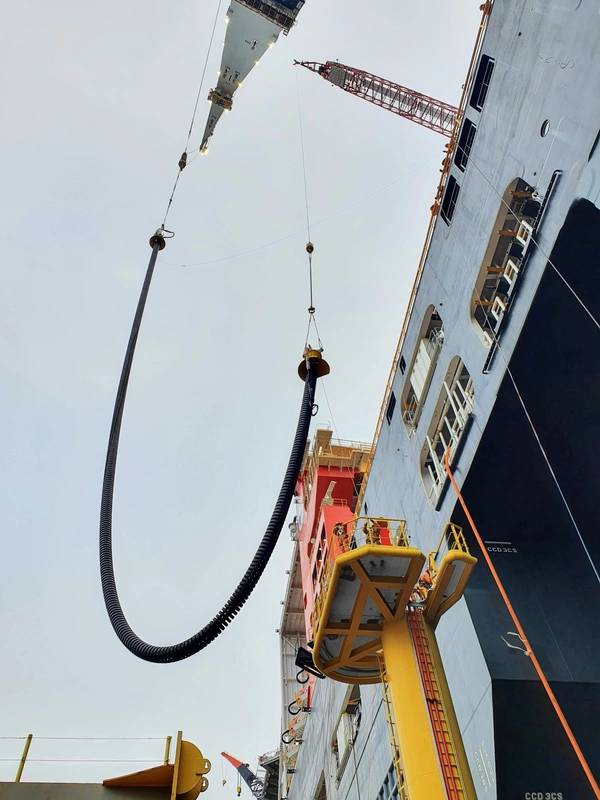

Offshore installation company Heerema Marine Contractors said Thursday that its largest semi-submersible crane vessels, Sleipnir and Thialf, recently switched from using their engines to using Shore Power in the Port of Rotterdam.
"The successful commissioning of the Shore Power project is the result of a partnership between Eneco, the Port of Rotterdam Authority, and Heerema with the support of the Gemeente Rotterdam. There is a global demand to reduce our impact on the planet and the partners involved in the Shore Power project are all dedicated to supporting the energy transition," the company said.
Shore Power enables vessels to switch off their engines and plug into the electrical grid for their energy supply.
"The connection built by Heerema, Eneco, and the Port of Rotterdam will supply Sleipnir and Thialf with sustainable energy that will originate from wind turbines located on the headland nearby or from another renewable source should it be required," Heerema Marine Contractors said. Commissioning Shore Power - Credit: Heerema Marine Contractors
Commissioning Shore Power - Credit: Heerema Marine Contractors
Koos-Jan van Brouwershaven, Heerema’s CEO said: “We are proud to successfully plug-in Heerema’s vessel to Shore Power. This project is the result of excellent collaboration and hard work from everyone involved. Heerema is committed to sustainability and we demonstrated this dedication by becoming Carbon Neutral in 2020. Each year from now to 2026 we have outlined our targeted emission reductions, and by plugging-in Shore Power we reduce our overall impact by 5%, equivalent to 5,000 diesel cars, which fulfills our first year’s target! We are looking forward to introducing more sustainability measures to continue this journey.” Plug inside the vessel - Credit: Heerema Marine ContractorsThe Shore Power connection has a 20 MW capacity, which is the energy equivalent of around 15,000 homes. As the vessels turn off their engines when connected to Shore Power, virtually all emissions and particulate matter is prevented because no more marine gas oil or LNG in Sleipnir’s case will be used. This action has direct benefits for local residents with air quality improvements and a reduction in CO2. Also, without the engines running there is a significant reduction in noise nuisance, Heerema said.
Plug inside the vessel - Credit: Heerema Marine ContractorsThe Shore Power connection has a 20 MW capacity, which is the energy equivalent of around 15,000 homes. As the vessels turn off their engines when connected to Shore Power, virtually all emissions and particulate matter is prevented because no more marine gas oil or LNG in Sleipnir’s case will be used. This action has direct benefits for local residents with air quality improvements and a reduction in CO2. Also, without the engines running there is a significant reduction in noise nuisance, Heerema said.
When Heerema's vessels turn off their engines when moored in the Port of Rotterdam for a standard repair and maintenance period there is a saving of 15,000 metric tons of CO2, 20 metric tons of particulate matter, 5 metric tons of sulfur, and a significant amount of nitrogen– comparable to the annual emissions of 5,000 diesel cars, the company said.
With tens of thousands of ships (almost 30,000) visiting the Port of Rotterdam every year, many of which running on diesel engines, there is a need to take action and reduce these emissions, Heerema said. By using Shore Power, vessels can switch off their diesel generators, saving up to 25,000 liters of diesel per day per ship and improving air quality, and significantly reducing noise.
Arno Bonte, Vice Mayor for Sustainability, Clean Air and Energy Transition of the City of Rotterdam: “Every year, about thirty thousand ships visit the port of Rotterdam. Most of them still use diesel generators, which pollute the air and are a great source of noise nuisance to local residents. Shore power supplies green energy directly from the shore, which allows ships to switch off their diesel generators.
"That can save up to 25,000 liters of diesel per day per ship and therefore provides significant environmental benefits. I am very proud, that after providing inland vessels with shore power, now both offshore vessels of Heerema are successfully plugged in at the largest shore power installation of Europe, here in Rotterdam. It means a major step towards a cleaner and future-proof port of Rotterdam”.
At least 90 percent of the offshore, ferries, cruise, and roll-on-roll-off ships and container ships in Rotterdam will have to use shore power by 2030. This saves the emission of approximately 200,000 tons of CO2 and 2500 tons of nitrogen.
As for the Heerema semi-submersible crane duo, AIS data show that Sleipnir, the world's largest vessel of the type, is currently moored in Rotterdam, while Thialf is at anchor in Stavanger, Norway. According to AIS, Thialf had left Rotterdam early in March, and moved to the UK North Sea, where it installed the Seagreen offshore wind farm substation.
Offshore Engineer has reached out to Heerema, seeking more info on when exactly the two vessels achieved their shore connection, and on the next assignments for Thialf and Sleipnir.
A Heerema spokesperson said that Thialf had been connected and commissioned before leaving Rotterdam, and that "we have now finished commissioning Sleipnir."
According to the spokesperson, Sleipnir’s next project is the Tyra Redevelopment project in the Danish North Sea for TotalEnergies, and Thialf’s next project is a decommissioning project in the North Sea.
 The Plug
The Plug